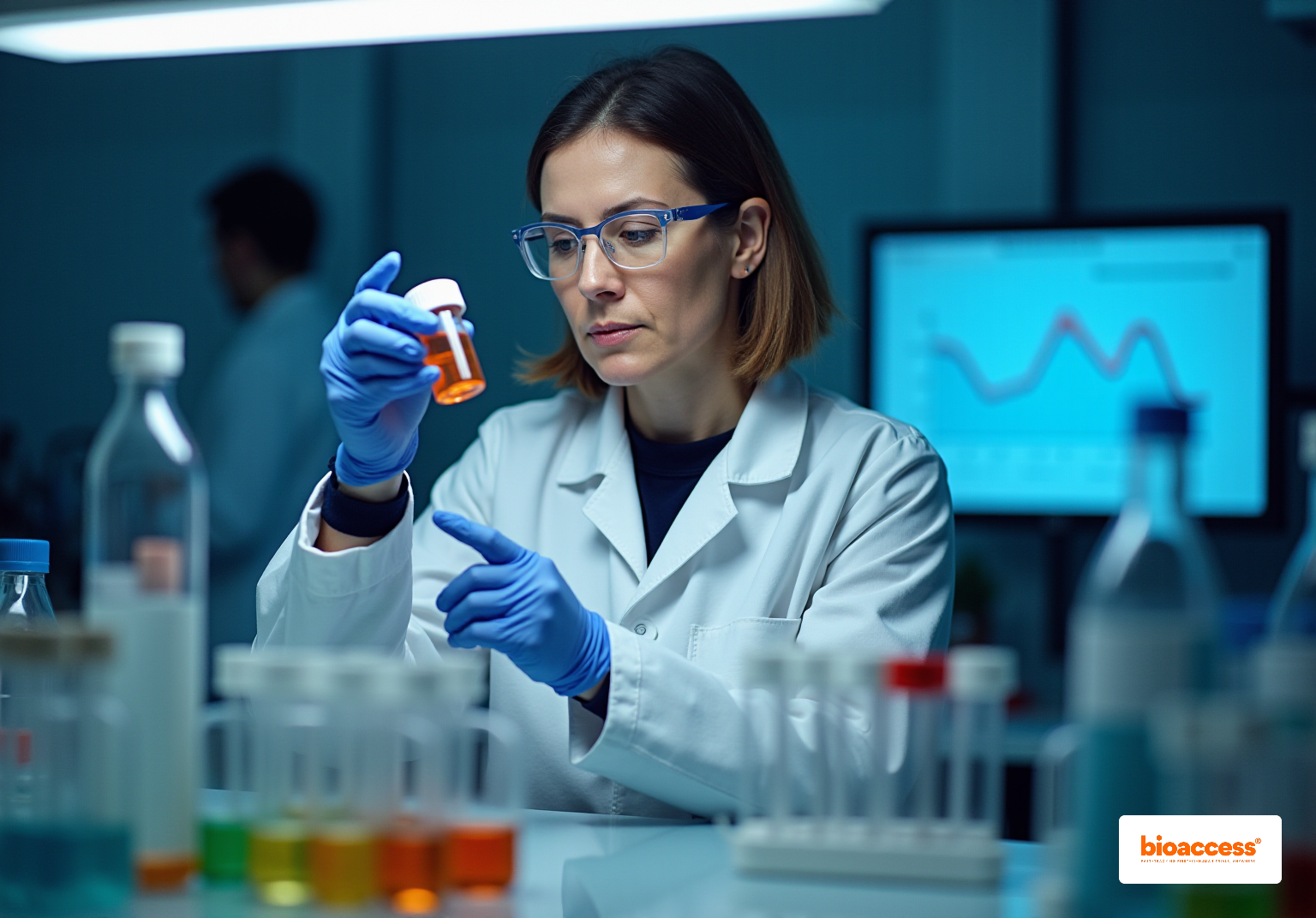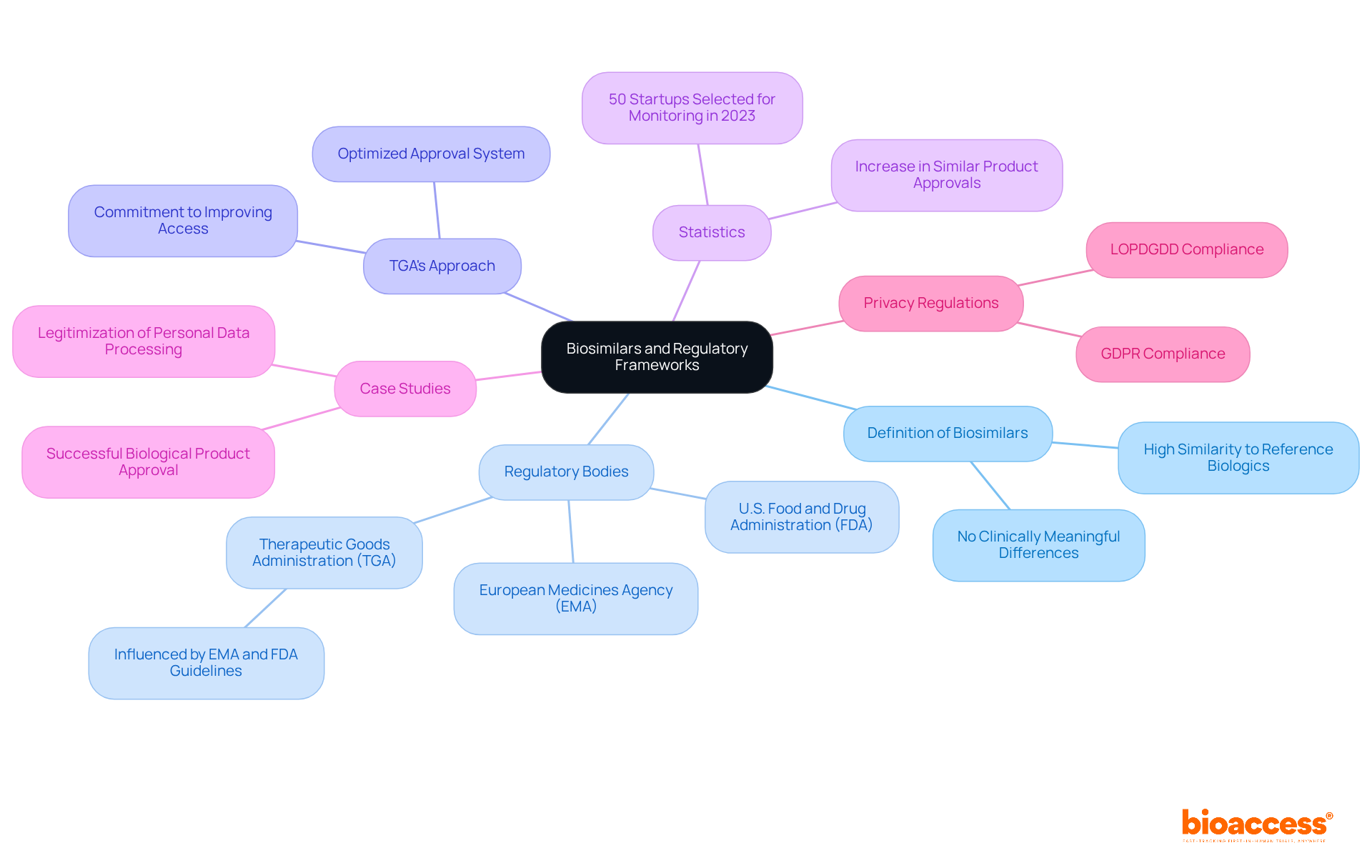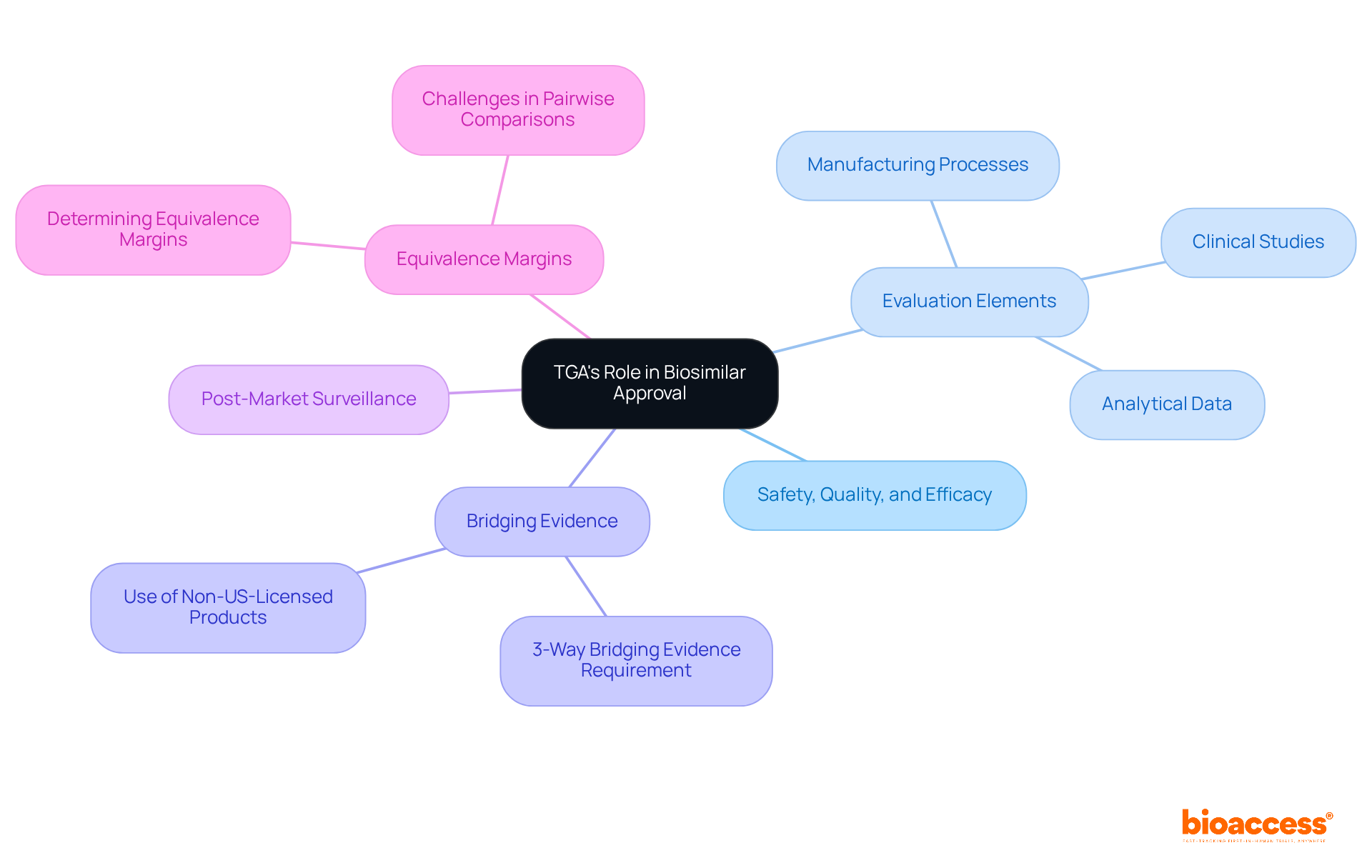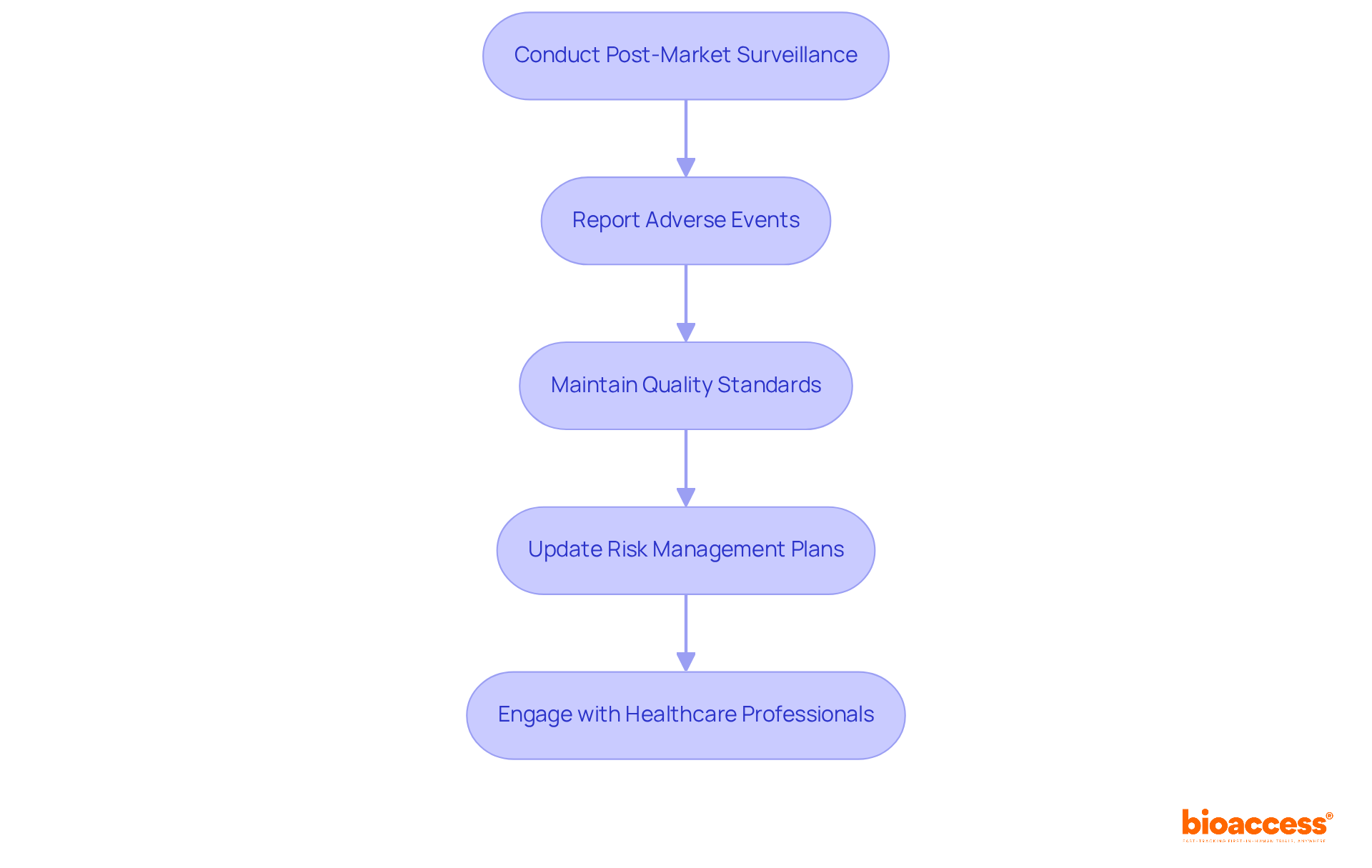


Biosimilars are a rapidly evolving segment of the biopharmaceutical landscape, presenting significant potential for enhanced patient access to essential therapies. Understanding the Therapeutic Goods Administration's (TGA) unique approach to biosimilar approval is crucial for stakeholders who aim to navigate this complex regulatory environment effectively.
With varying guidelines and increasing competition, manufacturers must consider: how can they ensure their submissions not only meet but exceed the TGA's stringent requirements?
This article delves into the intricacies of the TGA's biosimilar approval process, offering valuable insights and strategies for success in this competitive field.
Biosimilars are biologic medical products that demonstrate high similarity to already approved reference biologics, ensuring no clinically meaningful differences in safety, purity, and potency. Understanding the regulatory frameworks for biosimilars is essential, as these frameworks vary significantly across regions. In Australia, the Therapeutic Goods Administration (TGA) follows its approach to biosimilar approval, which is influenced by guidelines from the European Medicines Agency (EMA) and the U.S. Food and Drug Administration (FDA). This comprehension is vital for stakeholders, enabling them to anticipate the requirements for successful biological product development and approval.
As of 2025, the TGA's approach to biosimilar approval has optimized its approval system for these essential therapies, showcasing a commitment to improving access. Recent statistics reveal a notable increase in similar product approvals, with 50 startups selected for monitoring in 2023. This highlights the TGA's approach to biosimilar approval as a proactive strategy in aligning with global standards and fostering innovation in the biopharmaceutical sector. Furthermore, adherence to privacy protection regulations like GDPR and LOPDGDD is crucial in the approval process, ensuring responsible management of personal information.
A case study illustrating a successful biological product approval in Australia could further underscore the practical implications of these regulations and the TGA's approach to biosimilar approval. How can stakeholders leverage this knowledge to navigate their own challenges in clinical research? Collaboration and understanding of these frameworks are key to advancing the field.

The TGA's approach to biosimilar approval is crucial in ensuring the safety, quality, and efficacy of biosimilars before they can be marketed in Australia. This responsibility involves a thorough examination of submitted information, which must convincingly demonstrate that the biologic is highly comparable to its reference product. The TGA evaluates various elements, including:
to ensure compliance with established standards.
Importantly, drug sponsors are required to provide 3-way bridging evidence when utilizing non-US-licensed products for similar product regulatory submissions, a point emphasized in recent evaluations. Furthermore, the TGA's guidelines highlight the necessity of post-market surveillance to monitor the ongoing safety and effectiveness of biosimilars once they are in use. Recent case studies, such as 'Challenges in Biosimilar Assessment,' reveal the drawbacks of underutilizing information from studies and the potential biases introduced by pairwise comparisons.
Understanding the multifaceted role of the TGA, particularly its approach to biosimilar approval and the critical task of determining equivalence margins in equivalence tests, equips applicants to prepare comprehensive submissions that align with regulatory expectations. Insights from TGA officials further underscore the significance of these evaluations in enhancing approval chances within a competitive landscape.

To ensure a successful biosimilar application submission to the TGA, manufacturers must adopt the TGA's approach to biosimilar approval, leveraging the comprehensive clinical trial management services offered by Bioaccess.
Gather Comprehensive Information: Start by collecting extensive information on the biologic's quality, safety, and efficacy. This includes analytical studies, pharmacokinetic details, and clinical trial results. This foundational step is critical, as robust data underpins the entire submission process.
Conduct Analytical Comparability Studies: It's essential to demonstrate that the similar biological product is highly comparable to the reference product through rigorous analytical testing. Research indicates that acceptance criteria for equivalence testing are typically established at practical limits, ensuring that the similar product meets the required safety and efficacy standards. For example, the FDA's equivalence margin for critical quality attributes (CQAs) is often defined as 1.5 times the standard deviation of the reference product, underscoring the importance of a strong analytical foundation. Additionally, acceptance criteria for equivalence testing are generally set at a practical limit of four between the means of the reference and comparison CQA.
Prepare Clinical Trial Protocols: If clinical trials are necessary, ensure that protocols are meticulously designed to comply with TGA guidelines. This includes defining clear objectives and endpoints, which are essential for demonstrating the biosimilar's comparability. Bioaccess excels in trial setup and compliance reviews, ensuring that all protocols meet regulatory standards.
Compile Documentation: Gather all essential documentation, including detailed manufacturing procedures, quality control measures, risk management plans, and reporting on study status, inventory, and adverse events. Proper organization of these documents aids both internal reviews and regulatory assessments, facilitating a smoother evaluation process. As noted by Thomas A. Little, correct organization and appropriate methods for demonstrating comparability are crucial for supporting regulatory filings.
Engage with the TGA early by scheduling pre-submission meetings to clarify expectations and receive constructive feedback, in line with the TGA's approach to biosimilar approval. This proactive engagement can help identify potential issues early, allowing for timely adjustments and enhancing the likelihood of a successful application. Bioaccess's expertise in project management and monitoring can provide valuable support during this phase.
By adhering to these optimal methods and employing Bioaccess's extensive clinical trial management services, including feasibility studies and thorough reporting, manufacturers can simplify their submissions and comply with the TGA's approach to biosimilar approval, ultimately expediting the route to market.

Once a biosimilar receives approval from the TGA, manufacturers face several critical post-approval responsibilities:
Conduct Post-Market Surveillance: It's essential to implement a robust pharmacovigilance system that monitors the safety and effectiveness of the biosimilar in real-world settings.
Report Adverse Events: Manufacturers must promptly report any adverse events or safety concerns to the TGA, adhering to regulatory guidelines.
Maintain Quality Standards: Ensuring that manufacturing processes consistently meet the TGA's quality standards is crucial, including compliance with Good Manufacturing Practices (GMP).
Update Risk Management Plans: Regular reviews and updates of risk management plans are necessary, based on new data and feedback from post-market surveillance activities.
Engage with Healthcare Professionals: Fostering communication with healthcare providers is vital to gather insights on the biosimilar's performance and address any concerns that may arise.

Mastering the TGA's approach to biosimilar approval is crucial for stakeholders in the biopharmaceutical industry. Understanding the intricacies of the regulatory frameworks and the specific requirements set forth by the TGA enables manufacturers to navigate the complex landscape of biosimilar development and approval effectively. This knowledge not only facilitates successful submissions but also enhances access to vital therapies for patients in Australia.
Key points emphasized throughout the article include:
The TGA's role in ensuring the safety, quality, and efficacy of biosimilars is paramount, highlighting the need for manufacturers to engage proactively with the regulatory body. By adhering to best practices and leveraging resources such as clinical trial management services, manufacturers can significantly bolster their chances of a successful biosimilar application.
As the biosimilar landscape continues to evolve, staying informed about the latest regulations and approaches is essential. Stakeholders are encouraged to embrace collaboration and continuous learning to adapt to changing requirements. By doing so, they can contribute to a more innovative and accessible biopharmaceutical sector, ultimately benefiting patients who rely on these essential therapies.
What are biosimilars?
Biosimilars are biologic medical products that show high similarity to already approved reference biologics, ensuring no clinically meaningful differences in safety, purity, and potency.
Why is it important to understand regulatory frameworks for biosimilars?
Understanding regulatory frameworks is essential because they vary significantly across regions, impacting the requirements for successful biological product development and approval.
How does the Therapeutic Goods Administration (TGA) in Australia approach biosimilar approval?
The TGA follows its own approach to biosimilar approval, which is influenced by guidelines from the European Medicines Agency (EMA) and the U.S. Food and Drug Administration (FDA).
What changes are expected in the TGA's biosimilar approval process by 2025?
By 2025, the TGA's approach to biosimilar approval is expected to be optimized, showcasing a commitment to improving access to these essential therapies.
What recent statistics indicate the TGA's progress in biosimilar approvals?
Recent statistics reveal a notable increase in similar product approvals, including 50 startups selected for monitoring in 2023, indicating a proactive strategy in aligning with global standards.
What privacy protection regulations must be adhered to in the biosimilar approval process?
Adherence to privacy protection regulations such as GDPR and LOPDGDD is crucial in the approval process to ensure responsible management of personal information.
How can stakeholders benefit from understanding the TGA's approach to biosimilars?
Stakeholders can leverage this knowledge to navigate challenges in clinical research, as collaboration and understanding of these frameworks are key to advancing the field.
Is there any case study that illustrates successful biosimilar approval in Australia?
The article suggests that a case study illustrating a successful biological product approval could underscore the practical implications of the regulations and the TGA's approach, although specific details of such a case study are not provided.